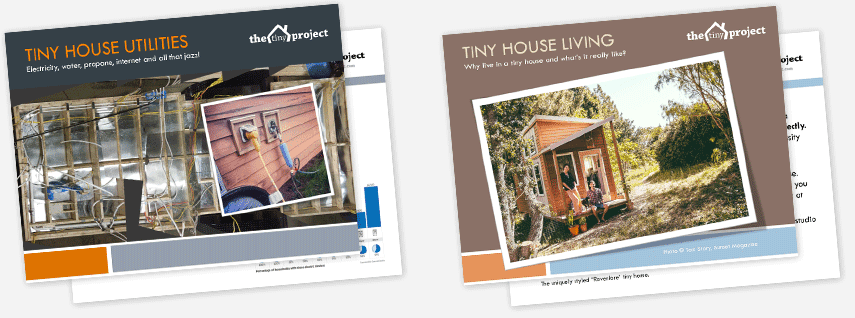Read our In-depth tiny house interview on Hobo with a Laptop

In some areas, this interview is more in-depth than what I've written on my blog, so I really wanted to share it here as an additional resource. Many of these questions and answers will help give you a better understanding our house, and will hopefully provide some insight into our tiny house lives now that we've been living the tiny life full-time for over 9 months.
Topics covered include:
- Why build a tiny house and what motivated you?
- How did your partner/family react?
- What were your bigrest challenges, failures and successes during the designing and building process?
- How do you suggest dealing with different climate concerns and what kind of insulation did you use?
- What specific appliances and features did you include in your house?
- What restrictions did you face in finding a place to park/live?
- What advise would you give to those interested in tiny houses?
Some of my favorite highlights from the interview
What type of toilet did you decide to implement, and why?
We’re currently in a massive drought here in NorCal, and we love that our house helps us do our part to conserve. A major recommendation of mine would be to use a composting toilet of some sort, not a flush toilet. It’s crazy to poop into the water cycle, flushing away gallon after gallon of fresh water each time.
We use a simple bucket system to compost our waste. We follow a protocol laid out in the Humanure Handbook by Joseph Jenkins, and it works very well. This method is nearly free (most composting toilets are around $1,500), requires no water (very good during our current drought) and has virtually no smell associated with it. In fact, I just had a visitor yesterday that kept commenting on how surprised he was that there was no odor at all.
This method is not for everyone, but I think many could easily get used to the minimal maintenance it requires to empty and clean the bucket every few days.
What type of insulation would you suggest for colder climate?
I think closed cell spray foam is excellent for all clients, including very cold weather. It also serves a second purpose in that it acts as a vapor barrier, so no additional moisture barrier is need is closed-cell foam is used. This foam fills all small cracks and gaps so is an excellent choice for a very tight envelope – which when used in conjunction with a good exhaust fan is helpful to maintain comfort in all climates.
As noted above, our main source of heat in the winter is the sun – solar gain from our many, large windows is a free way to heat the house!
Any parting advice for Hobo readers?
Be optimistic, but be patient enough to think things through. A tiny home should be exactly what YOU need to be happy – that’s the power you have when you take this road: to redefine what success, happiness, and freedom mean to you. That is something worth going for, even if it seems difficult along the way. Trust me, it can be a lot of fun too!


